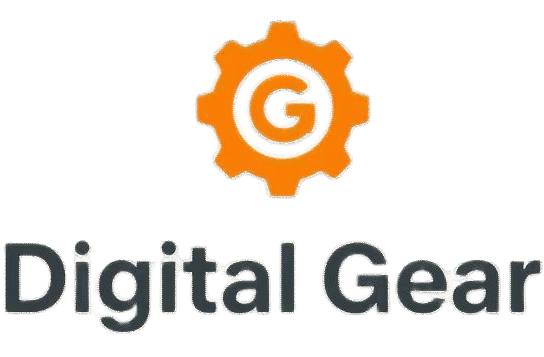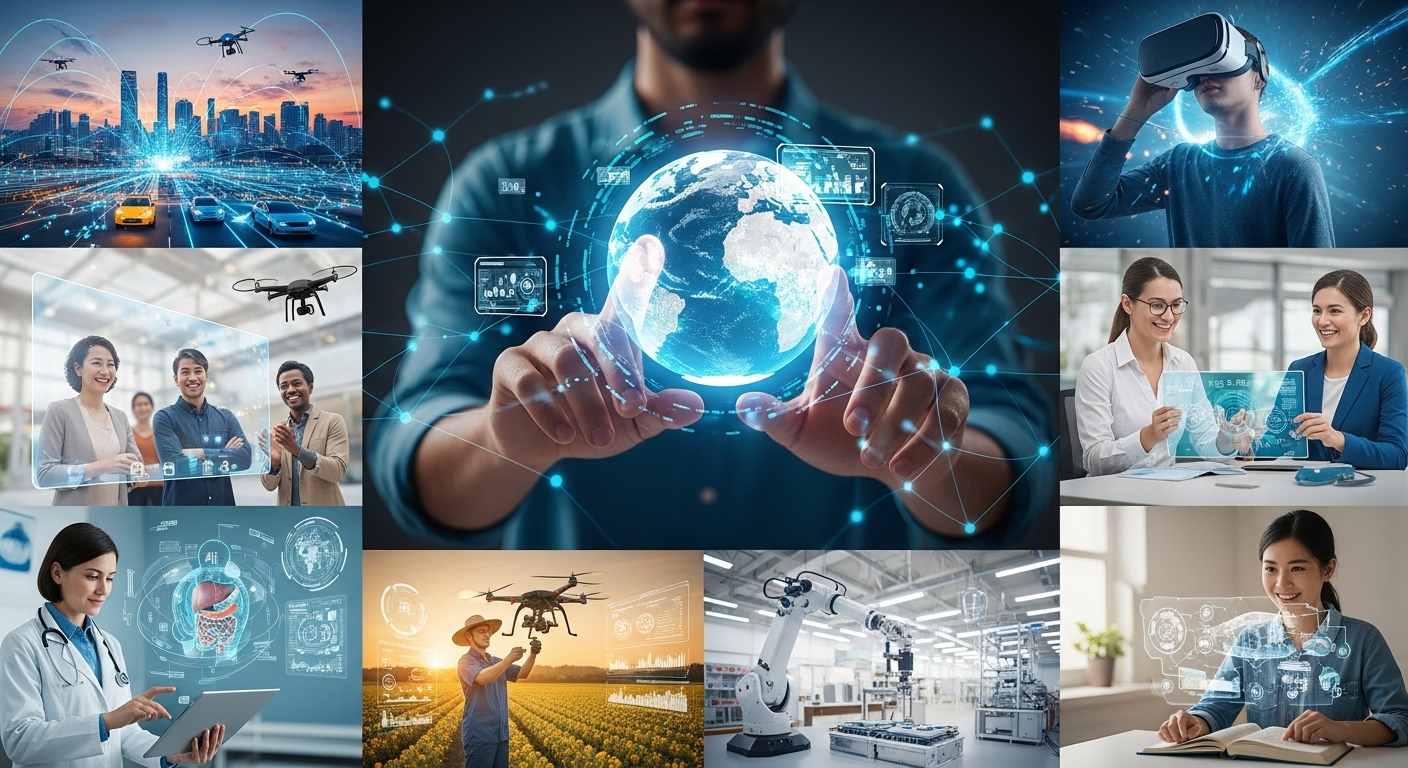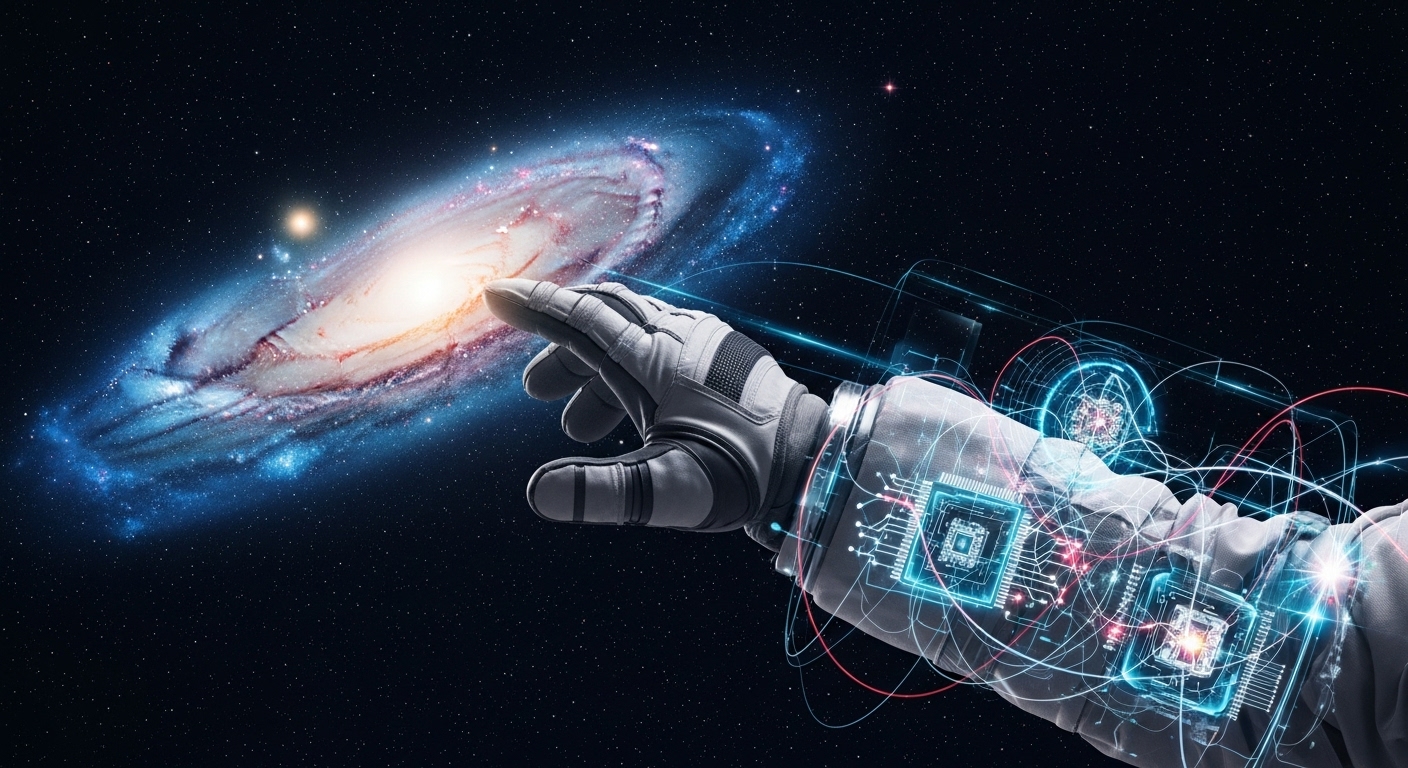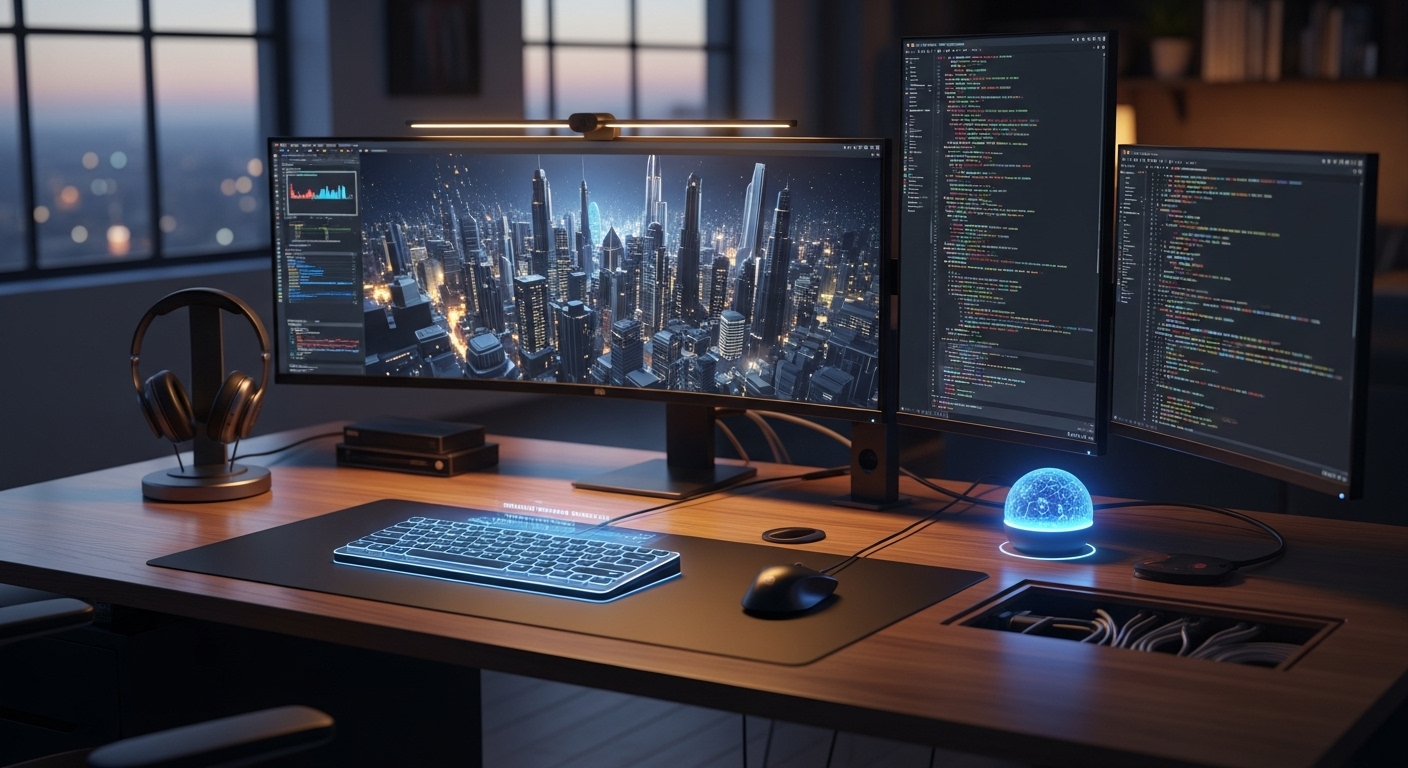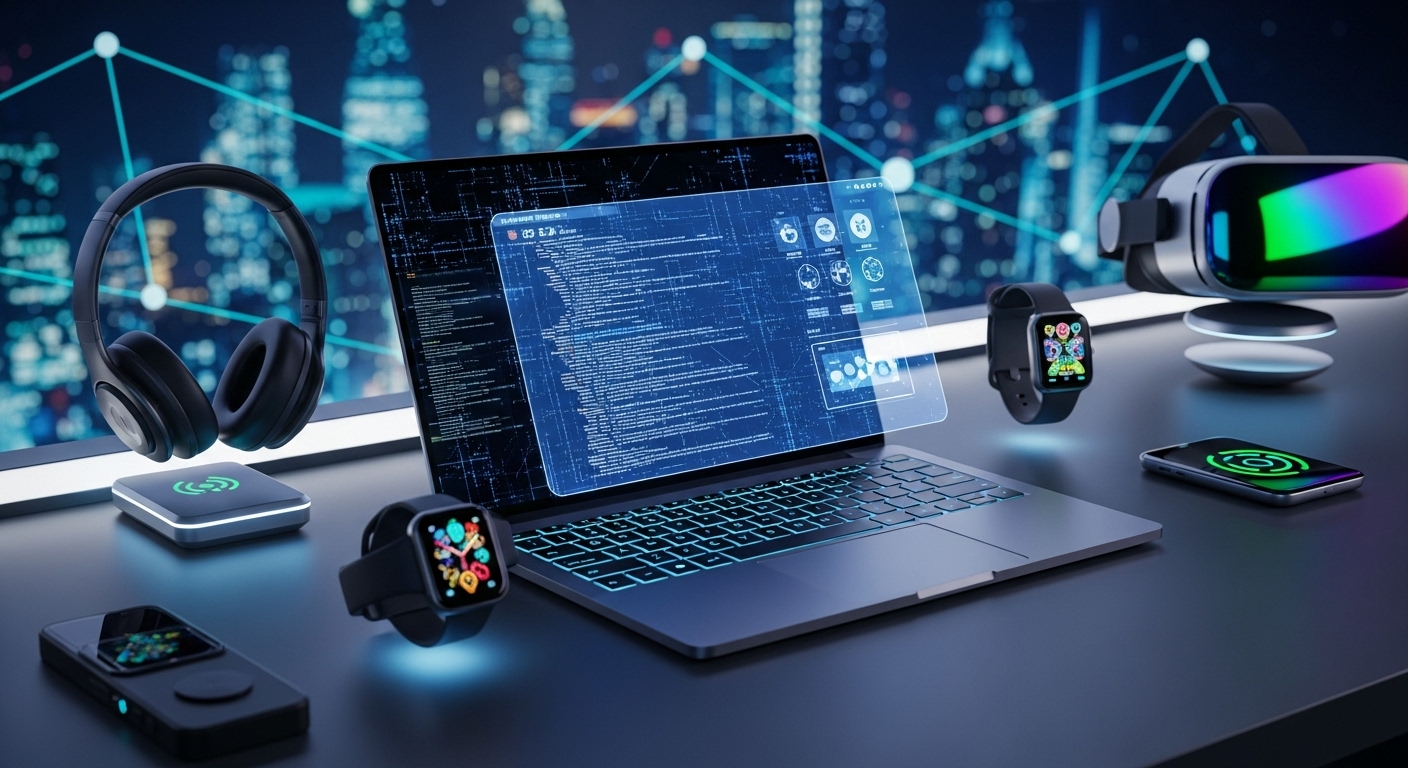Technology has become the heartbeat of modern civilization. It drives progress, connects societies, fuels economies, and transforms the way we live, work, and think. From the invention of the wheel to the rise of artificial intelligence, humanity’s technological journey is one of endless curiosity and relentless pursuit of improvement.
In this blog, we will explore the evolution of technology, from its earliest origins to the digital revolution of the 21st century, and look ahead to the innovations that promise to shape the future of humanity.
The Dawn of Human Innovation
Technology did not begin with computers or electricity. It began with survival. Early humans created tools out of stone, bone, and wood to hunt, build shelter, and defend themselves. These primitive innovations marked the beginning of humankind’s relationship with technology.
When humans discovered fire, it became one of the most transformative inventions of all time. Fire provided warmth, protection, and a method to cook food, leading to improved health and the development of complex societies. Over time, humanity learned to refine metals, domesticate animals, and cultivate crops — each advancement shaping civilizations in new ways.
The invention of the wheel around 3500 BCE marked another leap forward. It revolutionized transportation, enabling trade, communication, and expansion. These ancient technologies laid the foundation for every advancement that would follow, proving that innovation is as old as humanity itself.
The Agricultural and Industrial Revolutions
As societies grew, so did their need for efficiency. The Agricultural Revolution, which began around 10,000 BCE, saw the development of farming techniques, irrigation systems, and tools that could cultivate vast areas of land. Humans shifted from nomadic lifestyles to settled communities, giving rise to cities and complex economies.
Fast forward to the Industrial Revolution of the 18th and 19th centuries, and the world experienced another seismic shift. Steam engines powered factories, railways connected continents, and new manufacturing methods reshaped economies. For the first time, machines began to perform tasks once reserved for human labor.
This era introduced the concept of mass production, reducing the cost of goods and fueling global trade. It also brought challenges — pollution, urban crowding, and labor exploitation — but it undeniably changed the trajectory of civilization.
Electricity, the telegraph, and later the telephone transformed communication. The world began to shrink as ideas and information could travel faster than ever before. These technologies set the stage for the digital age that would soon follow.
The Birth of the Digital Era
The 20th century ushered in a period of technological acceleration unlike any before. The invention of the computer marked a turning point in human history. Early machines like the ENIAC and UNIVAC were massive and complex, but they laid the groundwork for modern computing.
The transistor, developed in the 1940s, replaced bulky vacuum tubes and enabled the creation of smaller, more efficient devices. The microchip, invented in the 1950s, condensed entire circuits into a single piece of silicon, giving birth to the personal computer revolution.
By the 1980s and 1990s, computers were no longer confined to laboratories or corporations — they had entered homes, schools, and offices around the world. The internet, originally developed as a military and academic network, evolved into a global communication platform connecting billions of people.
This digital revolution fundamentally changed every aspect of life. Businesses became more efficient, education more accessible, and communication instantaneous. Information, once a scarce resource, became abundant and free-flowing.
The Rise of Mobile Technology
The next great leap came with the rise of mobile technology. In the early 2000s, mobile phones transitioned from basic calling devices to powerful handheld computers. The launch of smartphones brought internet access, cameras, GPS navigation, and countless applications to people’s pockets.
The smartphone didn’t just change how we communicate — it changed how we live. Entire industries emerged around mobile technology: app development, digital marketing, e-commerce, and mobile entertainment.
With mobile devices came a new form of social interaction. Social media platforms allowed people to share experiences, connect with strangers, and create digital communities that transcended physical borders. The world became more connected than ever, but it also became more complex, with new challenges like privacy concerns, misinformation, and digital addiction.
The Age of Artificial Intelligence
If the internet connected the world, artificial intelligence (AI) is now teaching it to think. AI represents one of the most transformative forces of the 21st century. Machines are no longer just tools; they can now learn, adapt, and make decisions.
AI is already integrated into our daily lives — from voice assistants that understand speech to algorithms that recommend what we watch, read, or buy. In industries like healthcare, finance, and logistics, AI is optimizing systems, predicting outcomes, and uncovering insights humans could never process alone.
Machine learning and deep learning have given rise to new possibilities: autonomous vehicles, facial recognition, and natural language processing. These innovations are not just changing industries; they are redefining what it means to be intelligent.
However, with great power comes great responsibility. The rise of AI has sparked debates about ethics, privacy, and job displacement. How do we ensure that intelligent machines serve humanity rather than replace it? The answer lies in thoughtful governance, transparency, and the continued collaboration between technology and humanity.
The Internet of Things: A Connected World
The Internet of Things (IoT) extends connectivity beyond computers and smartphones to include everyday objects — from refrigerators and thermostats to cars and streetlights. These devices collect and share data to make systems smarter and more efficient.
In smart homes, IoT allows appliances to communicate with each other, optimizing energy use and providing convenience. In cities, IoT technology powers smart grids, traffic management systems, and public safety networks.
In healthcare, wearable devices monitor vital signs, track fitness goals, and even detect early symptoms of illness. This interconnected ecosystem has the potential to make life safer, healthier, and more sustainable.
Yet, the growth of IoT also raises questions about security and data privacy. As more devices connect to the internet, the risk of hacking and data breaches increases. The challenge lies in balancing innovation with protection — ensuring that the benefits of a connected world do not come at the cost of individual safety.
Cloud Computing and the Power of Data
Data has become the new currency of the digital age. Every search, click, and transaction generates information that can be analyzed to reveal patterns, behaviors, and opportunities. Cloud computing has made it possible to store and process this massive amount of data efficiently.
Instead of relying on local hardware, businesses and individuals can access computing power through remote servers. This flexibility has revolutionized industries, enabling startups to scale rapidly and enterprises to innovate without heavy infrastructure costs.
Cloud platforms have also made collaboration seamless. Teams can work together from anywhere in the world, sharing resources and updates in real time. Education, healthcare, and government services have all benefited from this digital shift.
However, with data’s growing importance comes a growing responsibility to manage it ethically. Issues like data privacy, ownership, and surveillance are increasingly central to the conversation about the future of technology.
The Impact of Technology on Society
Technology is more than machines and code — it’s a cultural force that shapes human experience. It influences how we communicate, learn, and form relationships. It redefines industries, economies, and even our concept of identity.
On one hand, technology has empowered billions of people. It has democratized information, opened new economic opportunities, and given a voice to marginalized communities. Digital tools allow individuals to create, share, and express themselves like never before.
On the other hand, technology has also introduced challenges. The spread of misinformation, digital addiction, cybercrime, and social isolation are very real issues in the modern age. The same platforms that connect us can also divide us, amplifying polarization and reducing attention spans.
To navigate this duality, society must cultivate digital literacy, empathy, and ethical awareness. The goal is not to reject technology but to use it wisely — as a tool for progress rather than division.
Automation and the Future of Work
As machines become more intelligent, the nature of work is evolving. Automation is replacing repetitive and manual tasks in manufacturing, logistics, and even professional services. While this boosts efficiency, it also raises concerns about job displacement.
The future workforce will require new skills — creativity, critical thinking, and emotional intelligence — qualities that machines cannot easily replicate. Education systems around the world are adapting to prepare students for this shift, focusing on digital literacy, problem-solving, and lifelong learning.
Remote work, accelerated by global events and digital infrastructure, has also redefined the workplace. Employees no longer need to be physically present to contribute meaningfully. Collaboration tools, cloud computing, and virtual environments are creating a more flexible and inclusive model of work.
Green Technology and Sustainable Innovation
As technology advances, so does our understanding of its environmental impact. The push for green technology — innovations that reduce waste, conserve energy, and protect natural ecosystems — has become a global priority.
Renewable energy sources like solar, wind, and hydroelectric power are transforming the energy sector. Electric vehicles are reducing dependence on fossil fuels, while smart grids optimize energy distribution.
Sustainability is not just about environmental protection; it’s about creating systems that can endure for generations. From biodegradable materials to energy-efficient devices, technology is paving the way for a cleaner, more resilient planet.
The rise of circular economy models, where resources are reused and recycled, shows that innovation and sustainability can coexist. The future belongs to those who design with both progress and preservation in mind.
Emerging Frontiers: Quantum Computing, Biotechnology, and Space Exploration
While the digital revolution continues to shape daily life, new frontiers are emerging that could redefine what is possible. Quantum computing, for example, promises to perform calculations beyond the reach of classical computers. It could revolutionize fields like cryptography, drug discovery, and climate modeling.
Biotechnology is another rapidly advancing field. Genetic engineering, bioinformatics, and personalized medicine are unlocking new ways to treat diseases and enhance human health. The ability to manipulate DNA has opened doors to possibilities once confined to science fiction.
And then there is space exploration — humanity’s next great adventure. Private companies and government agencies are working to make space travel accessible and sustainable. From colonizing Mars to mining asteroids, the future may well lie beyond Earth.
These frontiers remind us that technology is not static. It is a continuous journey of exploration and discovery — one that pushes the boundaries of imagination and reality.
The Human Side of Technology
Amid all the innovation, it’s important to remember that technology is a human creation. It reflects our values, ambitions, and imperfections. Every invention begins with a question — how can we make life better?
Yet, as technology becomes more advanced, it also becomes more personal. Devices know our habits, preferences, and even emotions. This intimacy between humans and machines demands reflection. What does it mean to maintain humanity in a digital world? How do we preserve authenticity in an era of algorithms?
The answer lies in human-centered technology — innovation that prioritizes empathy, ethics, and inclusivity. Technology should serve as an extension of humanity, not a replacement for it. The most meaningful progress is that which uplifts, empowers, and connects people.
The Future: Where Innovation Meets Imagination
The future of technology is both thrilling and uncertain. Artificial intelligence may become more autonomous, quantum computing could rewrite the laws of digital processing, and biotechnology might extend human lifespan. But with every breakthrough comes new ethical and social questions.
Will automation create a world of abundance or deepen inequality? Will digital realities enhance human connection or replace it? The answers depend on how humanity chooses to guide its inventions.
The next era of progress will not be defined by faster machines or smarter algorithms alone — but by the wisdom with which we use them. The true power of technology lies not in what it can do, but in what it can help us become.
Conclusion: The Endless Journey of Innovation
Technology is not merely a collection of tools; it is the story of human evolution. From fire and stone to silicon and code, every era of innovation reflects our quest to understand and shape the world around us.
As we look to the future, the responsibility to use technology wisely becomes greater than ever. We must balance innovation with ethics, speed with sustainability, and progress with purpose.
The evolution of technology is far from over. It continues to unfold — in laboratories, classrooms, and even in our pockets. And as it does, it carries with it the most profound truth of all: that the greatest technology ever created is not the machine, but the mind that built it.
